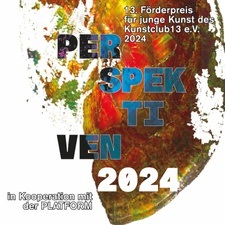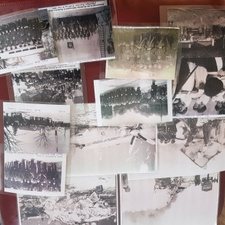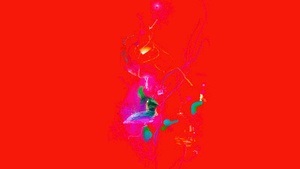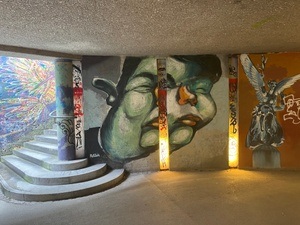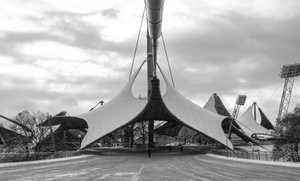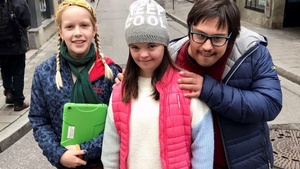Mumkin Sura? - Ägypten 1983 – Fotografien von Dirk Altenkirch
In the organizer's words:
The State Museum of Egyptian Art (SMÄK) will be showing photographs by Dirk Altenkirch from May 14, 2024. "Mumkin Sura?" integrates over 80 black and white photographs into the museum's permanent exhibition in an unusual way. The respectful question "Mumkin Sura?" ("Is a photo possible?") is representative of the reciprocal interaction between photographer and portrayed and accompanied Dirk Altenkirch like a fixed sentence on his journey through Egypt in 1983. The photographs and portraits from the several-week stay provide rare and unique insights into the everyday life of people off the beaten track, which has changed little to this day.
An exhibition within the exhibition
The museum team developed a new concept for the integration of Dirk Altenkirch's photographs into the permanent exhibition in close cooperation with the planning office "Die Werft". Banners over six meters high are hung in front of the windows facing the inner courtyard in the two rooms "Art and Form" and "Art and Time". They thematically present the individual stages of the photographer's journey to Egypt in a total of 65 images. Eighteen panels focus on the women, men and children that the photographer encountered on the excavation, at the market stalls and stores, in the cafés or in the narrow alleyways of the oasis villages. In the passageway connecting the two art rooms, nineteen backlit portraits are displayed on another picture rail.
The trip to Egypt in 1983
On his trip to Egypt in 1983, which lasted several weeks, Dirk Altenkirch was primarily interested in the people, whom he observed without staging and portrayed expressively. His black and white photographs show their authentic lives off the beaten tourist track. To this day, the living conditions of the women, men and children have mostly changed little, which is why Altenkirch's pictures have retained their topicality. "Mumkin Sura?" - "Is it possible to take a photo?" - This question accompanies the photographer on each stage, both to him as the photographer and to the person being photographed. The heartfelt consent is reflected in many of the resulting images. Her subjects are varied and focus on the people at the excavation, in the cities or in the oases.
Themes of the black and white photographs
On the one hand, Dirk Altenkirch dedicated numerous pictures to the Egyptian excavation team in Quantir, the "Rais" as the head of the workers as well as individual "Quftis", the skilled workers whose families sometimes work on the excavation projects for several generations, or the mostly young women who balance the rubble baskets made from old car tires on their heads and pile up the earth into metre-high mountains. On the other hand, Altenkirch roamed the colorful everyday and street life in Cairo and Alexandria, photographing souq markets with their vendors and delivery boys, small stores in niches in the walls, entire streets dedicated to a particular craft, but also the Arab café culture between Art Deco style and simple sidewalk cafés. He also got to know life in the oases of Libya's Western Desert as a contrast to the hectic everyday life of the big cities. The unique mud architecture of the oasis towns of Bahariyya, Farafra, Dachla and Charga dates back in part to the 13th century. Altenkirch picks up on the architecture, but the focus here is also on people such as men playing the traditional board game "Seega" on the ground, or their portraits in traditional garments and jewelry.
About Dirk Altenkirch
The photographer Dirk Altenkirch (*1955 in Karlsruhe) devoted himself to photography as a medium for communicating architecture while still studying architecture and founded his first photo studio. When he was given the opportunity in spring 1983 to accompany the archaeological excavations of the Roemer and Pelizaeus Museum in Hildesheim in the ancient capital of Piramesse, today's Qantir (Egypt), under the direction of Edgar Pusch, he did not hesitate and joined the excavation team. In addition to everyday excavation work, he documented life in the major cities of Cairo and Alexandria, as well as in the oases of the Western Desert (Bahariyya, Farafra, Dachla and Charga) with several 35mm cameras. To this day, Atelier Altenkirch focuses on architectural photography as well as art documentation, documentation for restoration purposes and monument conservation.
State Museum of Egyptian Art (SMÄK)
Gabelsbergerstrasse 35
80333 Munich
Opening hours:
Tuesday 10 a.m. - 8 p.m., Wednesday to Sunday 10 a.m. - 6 p.m.
Opening hours on public holidays see www.smaek.de
Prices/tickets:
Special exhibition included in museum admission
Adults € 7, reduced € 5
Children under 18 years free
This content has been machine translated.



